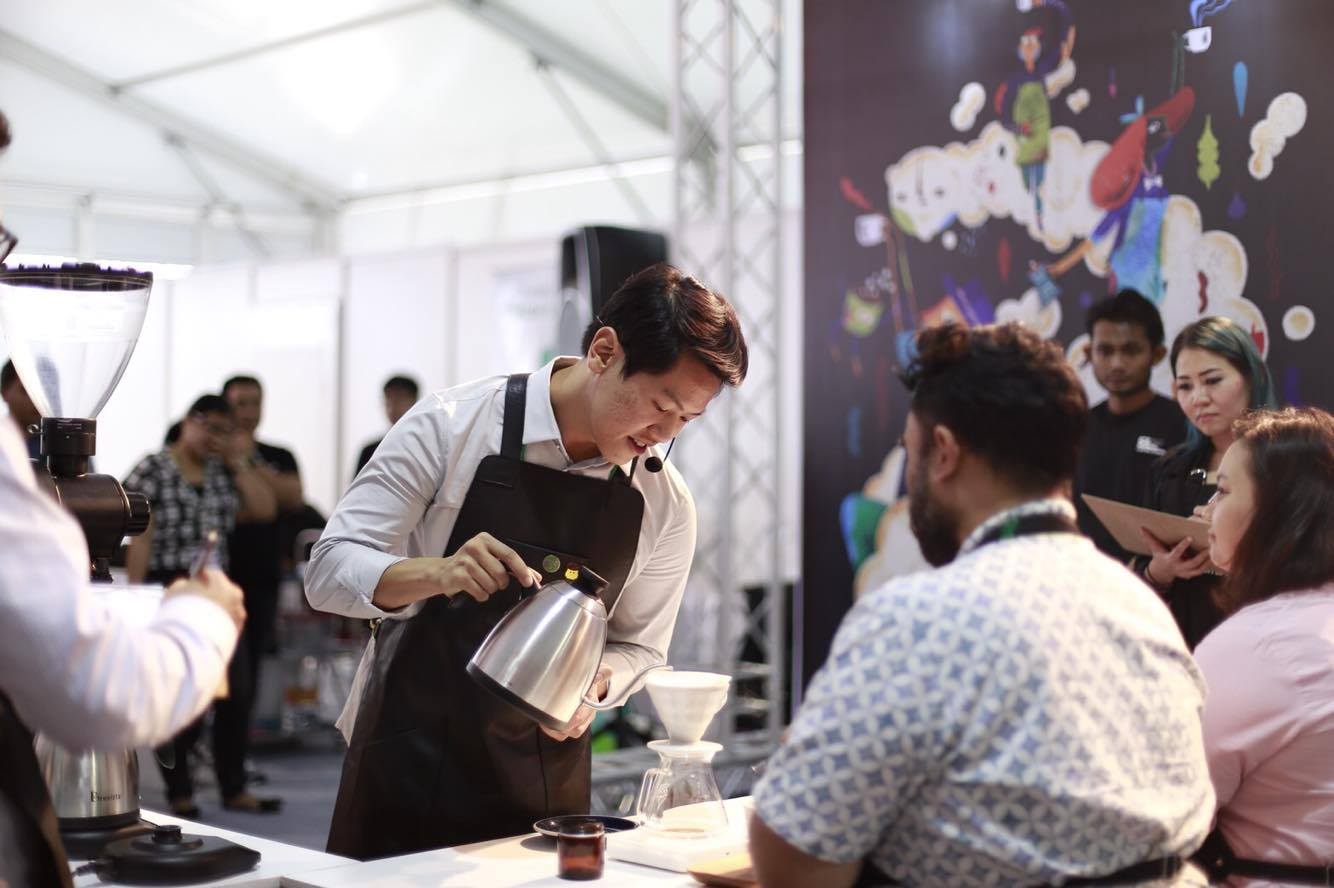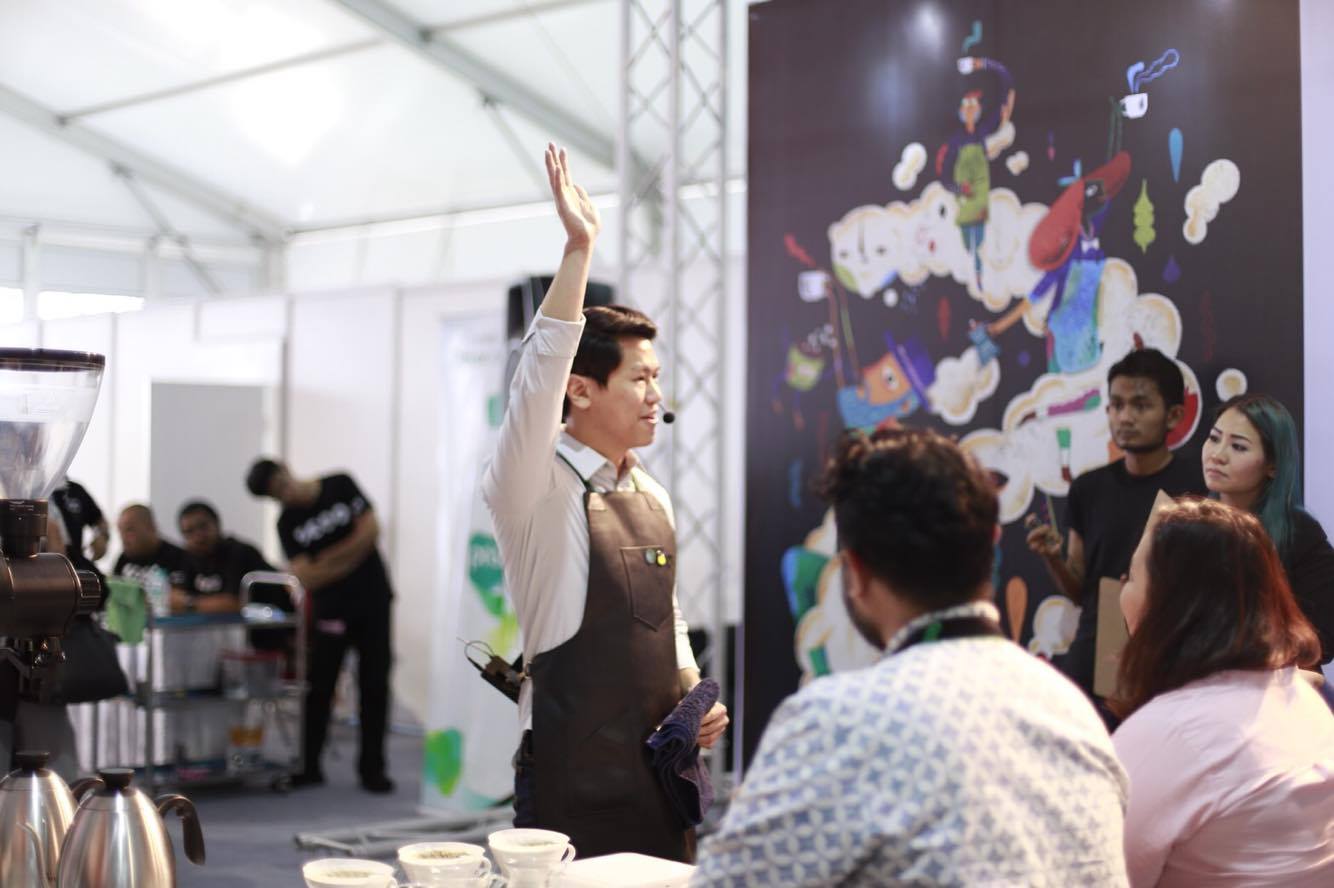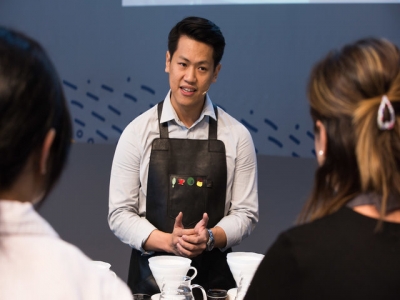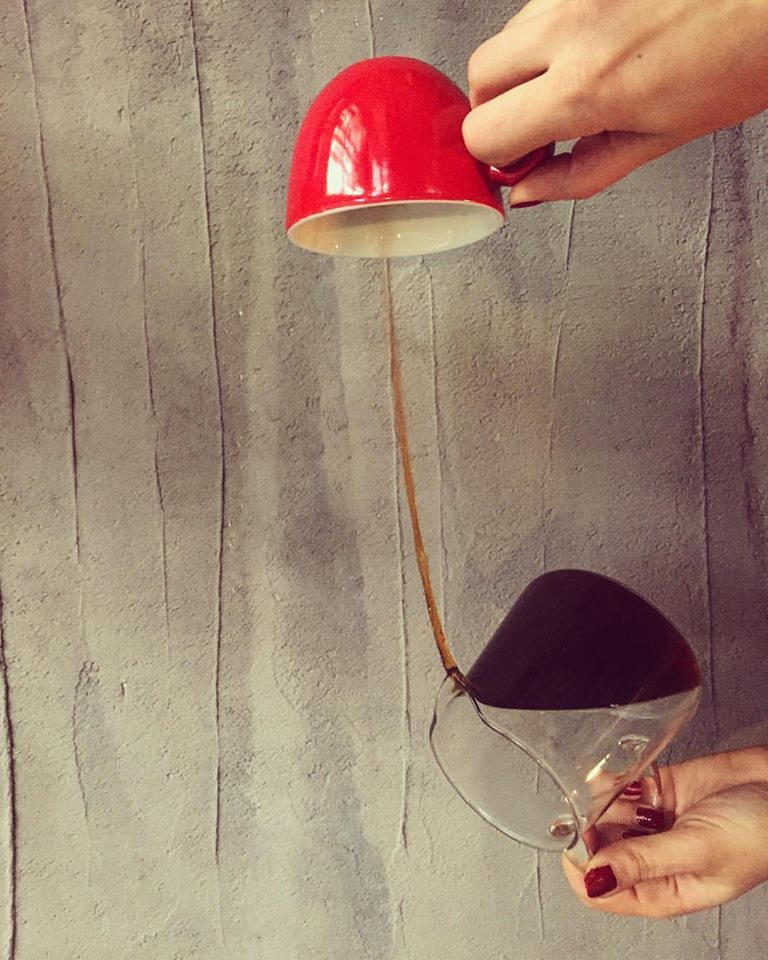by Harison Chandra
Owner at Ottoman's Coffee Brewers,7th World Brewers Champion 2017
As a business owner, QC and trainer at Ottomans Coffee, I am obliged to upgrade myself all the time so I could give adequate training and troubleshooting whenever needed by my barista. And I quickly realized one of the fastest way to improve is by joining competition. I thoroughly believe that by joining competition will push you on to be better than yesterday in so many aspects. I have just joined coffee industry for 1.5 years, who would have thought that I would go on to win the IBrC and placed 7th in WBrC in my first ever year competing. The keys to this are dedication and team. I can’t stress enough the importance of team efforts and supports starting from family, friends, roaster, coach and mentor. I must specially credit the leap of quality to the Ottoman’s Coffee Brewers family, Commongrounds Coffee Roastery family and Tetsu Kasuya: they are my source of inspiration.
In preparation of the competition, my background as a chemical engineering leads me to my technical approach in understanding the deeper brewing principle. Brewing coffee can be simple and complicated at the same time. It basically consists of two main components: coffee and water, when these two components come in contact, brewing process occurs. Now, it gets complicated when we think deeper about the process, so let’s talk about it.

Coffee:
Obviously the most integral part of all is the coffee itself. Each origin and variety has its own unique flavour. I chose to use gesha varieties from Finca Deborah, Panama. It is located in Volcan at the altitude of 1950 meters above sea level. I can still remember the first time I cupped this coffee and it was mind blowing. It distinctly has pronounce tropical and jasmine tea aromatics, the flavour was so intense and complex, it had different layers of citrus, tropical fruits, stone fruits, white grapes and green apple. The balance of sweetness and acidity was stunning. But one of its quality trade is that it was so clean, almost too clean for a coffee. It makes me feel like I was drinking cold pressed juice rather than coffee. And If I had to summarize this coffee in one word, it would be ‘Elegant’
Process:
Equipment
The type of equipment used, usually between immersion or pour over method, could determine the brewing process. For open service, I chose pour over and specially Hario V60-02 Ceramic because it produces a well-balanced coffee in terms of sweetness, acidity, body and flavour. This is perfect to highlight the beautiful elegance of Natural Process Finca Deborah Gesha.
''Brewing coffee can be simple and complicated at the same time.''
Brewing variables
Understanding the brewing variables is one of the key to brew delicious coffee. I took fair amount of time understanding how each variables affects the end cup, obviously it is all lead to extraction. But I believe that each variable attributes to different aspects to the end cup, those basic variables are: brew ratio, grind size and water temperature. So I did a little experiment on changing only one variable at a time while keeping the others to my normal standard. For example changing only the brew ratio for the first trial, and on the next trial, I put brew ratio back to the standard while changing the grind size and so on for the next trial. This is what I found from my little experiment: brew ratio affects the perception of body and dryness, grind size controls bitterness and flavour intensity while temperature influence sweetness, acidity and roastiness. By understanding this, I could quickly adjust the variables to represent the best potential of the roasted beans on the cup, sometimes by changing three variables at the same time.
Brewing method
On the road to WBrC, I knew I had to up my game because my old method would not make it for the world standard. I threw away all I had previously, in order to do that I need to start off with a blank page and start off with a completely new approach in search of a simple but effective result. Combining it with my little experiment about the brewing variables above I came up with a simple, customize method dependent on the beans origin and potential. So here is my brewing method. I classify the brewing process into two stage: pre-infusion and extraction stage.
I further divide the pre-infusion process into two stages, first and second pre-infusion. Pre-infusion is the process of getting ground coffee ready for optimum extraction. The CO2 within the ground coffee is hindering the extraction. So when the water first come in contact with ground coffee, it accelerates the CO2 release, hence the first part of pre-infusion. Some of these CO2 are still trapped within the ground coffee bed, so here goes the second part and the purpose is to wash all these CO2. After that the ground coffees are the optimum state for extraction. The total of water used in my two step pre-infusions are 50g of water. Furthermore, the amount of water poured into first and second stage does influence the flavour of coffee quite significantly. For instance, pouring 30g-20g will produce more acidity vs 20g-30g that will produce a sweeter coffee. For the coffee I used (Finca Deborah Gesha), it has beautiful citrus acidity and I want to improve the overall balance of the coffee by increasing the sweetness. So I chose the latter, which is 20gr in the first pre-infusion and 30gr in the second pre-infusion.
''There is no such thing as magic recipe. Each coffee origin has unique characteristics,therefore do not be afraid to explore every aspect!''
The extraction stage is one that excites me a lot. The remaining water required to make up to the target brew ratio can be divide into as many pour as I desire, more pour means higher extraction in both body and dissolved coffee solids. For example, if the total water required is 200g then the remaining water required is 200g minus 50g (pre-infusion) leaving us with remaining 150g of water which can be poured in 1, 2, 3 or even 4 pours. The coffee solids of brewed coffee in 4 pours will be higher than 1, 2 and 3 pours, this is reflected in the higher TDS reading in 4 pours compare to the rest. This method allows me to tailor made the pour depending on the coffee and the roast profile. For the coffee I used, I wanted to extract all the goodness of the gesha while avoiding over extraction. Thus, I went for 3 pours and that is 150g divided by 3 which is 50gr in each pour.
At both stages above, I let all the water drained out of coffee bed before going for the next pour. This does two things. First,it will improve consistency because we can easily inspect by visually see if the water has drained out without worrying too much about the water height level on the coffee bed. Second, it optimizes the extraction rate by pouring fresh water into the coffee bed at the beginning of each pour. This is due to concentration difference following the law of mass transfer; you should read on this if you are interested.

Brew Water:
I chose to talk about water chemistry at the end because as important as it is, it is not readily available to most people and café. It requires a lot of thinking, reading and experiment before deciding which mineral compositions suit the coffee best but it is impractical to keep customizing water, depending on coffee origin and roast profile. But to put things in context: the brewed coffee that we consume is about stunningly 98.6% water so to say water mineral composition is not important is foolish. But in general, it would be safe to follow the water composition standard set by SCA.
However, if you want to go into competition, it is worth going deep into understanding water chemistry. The information is readily available out there and the best source would be the book “water for coffee” written by Maxwell and Chris, kudos to them. To summarize, there are three main components that plays important roles in brewed coffee: Magnesium (Mg+), Calcium (Ca+) and Bicarbonate (HCO3-). These three plays different roles; Magnesium and Calcium are important for extraction (albeit both of these minerals give different impression to the end cup) while Bicarbonate is important in highlighting the brightness and acidity to the cup. I would not go deep into this because I would write another article to cover this issue. But based on this knowledge, I made several waters with different mineral compositions and put this under test by cupping method to find one that best suited to my coffee and roast profile, the results was 60 ppm of Magnesium, 20 ppm of Calcium and 25 ppm of bicarbonate.
2017 WBrC recipe:
Finca Deborah Gesha – Natural Process
15g of Coarsely Ground Coffee
200g of water at 95OC
Just make sure that in each pour the water is evenly distributed onto coffee grounds and wait all the water to drain before going into the next pour.
- 1st Pre-infusion pour 20gr
- 2nd Pre-infusion pour 30gr
- 1st extraction pour 50gr
- 2nd extraction pour 50gr
- 3rd extraction pour 50gr
Last word...
Remember: magic recipe is a myth: do not treat every coffee the same, there is no such thing as magic recipe. Each coffee origin has unique characteristics, therefore do not be afraid to explore every aspect. It is for your own benefit to understand the coffee chemistry and learn about what are the chemicals in roast coffee beans that gives you awesome taste. At the end of the day brewing coffee is a series of chemical and physical reactions. The world of coffee is there for you to surf. Good luck!
#explorebrewing





